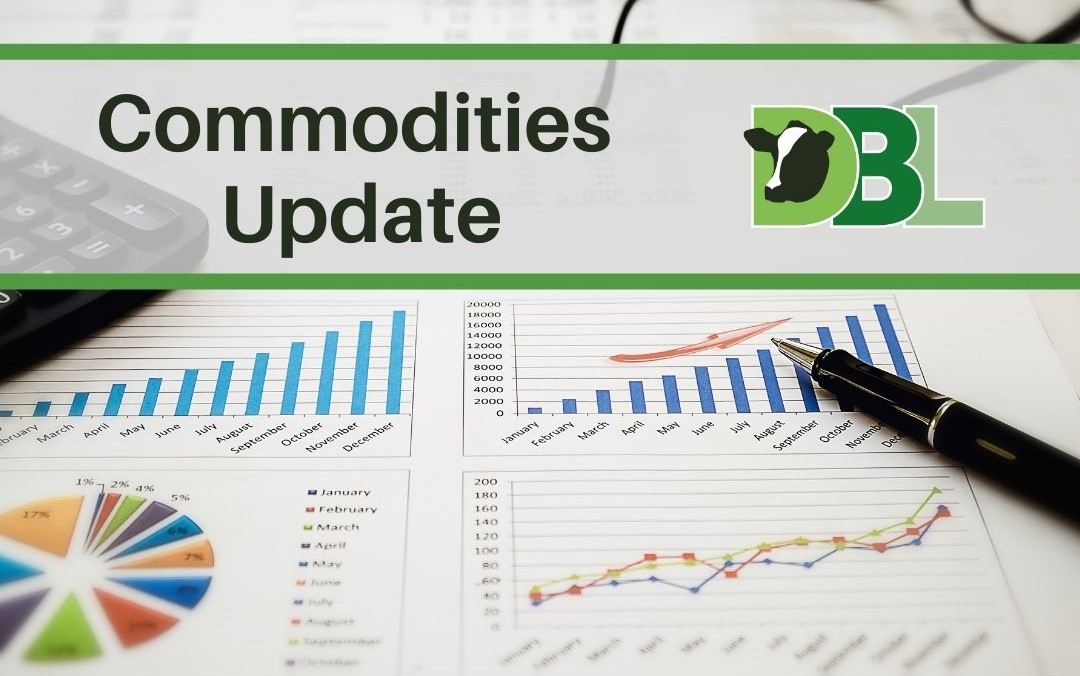Commodities Update (10th May)
Over the last month the pound has weakened against both the dollar and euro, falling to its lowest versus the dollar since July 2020.

The Bank of England has warned that the UK economy will shrink this year as it raises interest rates to try to stem the pace of rising prices. Rates have risen to 1% from 0.75%, their highest level since 2009 and the fourth consecutive increase since December. Inflation, at its highest for 30 years, is set to breach 10% by the end of the year, with fuel, energy and food costs soaring partly due to the Ukraine war.
The GDT has seen sharp falls in the last month, -3.5% & -8.5%, following consistent increases during the first three months of the year.
Oil prices have been volatile during the past month, with Brent Crude currently at just over $105/barrel.
Current gas prices have continued to fall over the past month, currently at around 125p/therm. The price moving forward is creeping up from around 200p/therm to 225p/therm for winter 2022.
Milk Powder
Following the peak in early April, skim milk powder prices have fallen over the past month, with a drop of -6.5% at the most recent auction, however this has yet to have an impact on milk powder as these prices are continuing to firm. If you are an autumn calving herd, should you be buying milk powder now?
Fertiliser
Prices are still high and firm. Yara issued new terms at the beginning of the week in Europe (not UK) with AN 33.5 close to £675/t delivered. However, this initial gambit was short lived and all offers have been withdrawn. CF are likely to release a new price in the next couple of weeks.
Phosphate remains firm and certainly shows no sign of dropping in the short term. Potash continues to firm driven by strong demand from South America and the sanctions imposed on Russia/Belarus. Sulphuric acid has dramatically increased in price due to short supply, freight and energy costs of production. This will filter through to Nitrogen Sulphur products.
Feed
Cereal prices are likely to continue to remain firm this summer, not only due to the war in Ukraine but also dryness persisting across the whole of Argentina and the vast bulk of Brazil, India is also being affected by dry weather.
Aussie Ag Attaché also put the 22/23 Australian crop lower at 29 Mmt based on a 4% drop in plantings and a sharp drop in yield of 17% back towards the long term average.
China’s 2022 beans demand is forecasted to decline by 6% due to a reduction in feed requirements. Soybean harvest in Rio Grande do Sul, Brazil now 55% complete, but has been slowed by recent drought and issues with transport worker strikes.
Soybean plantings are progressing slower than normal in US, with 3% completion compared to 2021’s pace of 7% and the prior five-year average of 5%.
For up to date prices please contact Louise on 07943 684215 or e-mail louise@dblbuyinggroup.co.uk

Recent Articles
- Have you Ordered Your Silage Inoculant?
- Growing More Grass With Less Nitrogen, Where Do I start?
- A Real Recognition of The Importance of Food Security or Simply A Reconciling of DEFRA Budgets?
- Silage Sheet Prices Available!
- Are Your Cows at Risk of Grass Staggers?
- Feed Late Afternoon and Calve in Daylight Hours!
- Q Fever
- Aerating Your Soil Without A Machine? – Gerard Finnan
- Why Are You Not doing a Soil Management Plan?
- What are the Rule Changes for Urea Fertiliser in April?

